Guitar World Verdict
While it is undoubtedly a no-brainer purchase for the ambience freaks, shoegazers and experimentalists among us, the Encounter has wide-ranging functionality as a practical delay and reverb unit that may well be the only one any player would need on their ’board.
Pros
- +
Two switchable reverb/delay engines in one compact pedal.
- +
Great range of sound variation.
- +
Presets.
- +
Comprehensive software editor/librarian.
- +
MIDI.
- +
Mono/stereo operation.
Cons
- -
You need to use the app to unlock its full potential.
You can trust Guitar World
What is it?
The Encounter is the fourth pedal to use the dual-footswitch form factor seen in previous Source Audio pedals.
The Ventris Dual reverb and the Nemesis delay were the first two and then came the Collider, which basically combined some of what those two provided in a pedal that offered individually footswitchable reverb and delay.
The new Encounter is more of the same, but where the Collider led with the more traditional reverb and delay types, this time things get more esoteric with some reimagined and enhanced from the Ventris and Nemesis, and some all-new engines developed by the Source Audio boffins.
You get six delay and six reverb engines in total, to be selected with the encoder knob. The two footswitches effectively give you two separate pedals that can be used individually or together, but while the two sides of the pedal may be marked on the front panel as Delay and Reverb, they are really Engine A and Engine B because you can actually load any of the 12 engines into each side, allowing dual delay or dual reverb combinations.
Whatever you set up can be saved as a preset and you can access eight of these from the front panel or a full 128 if you use MIDI.
Specs
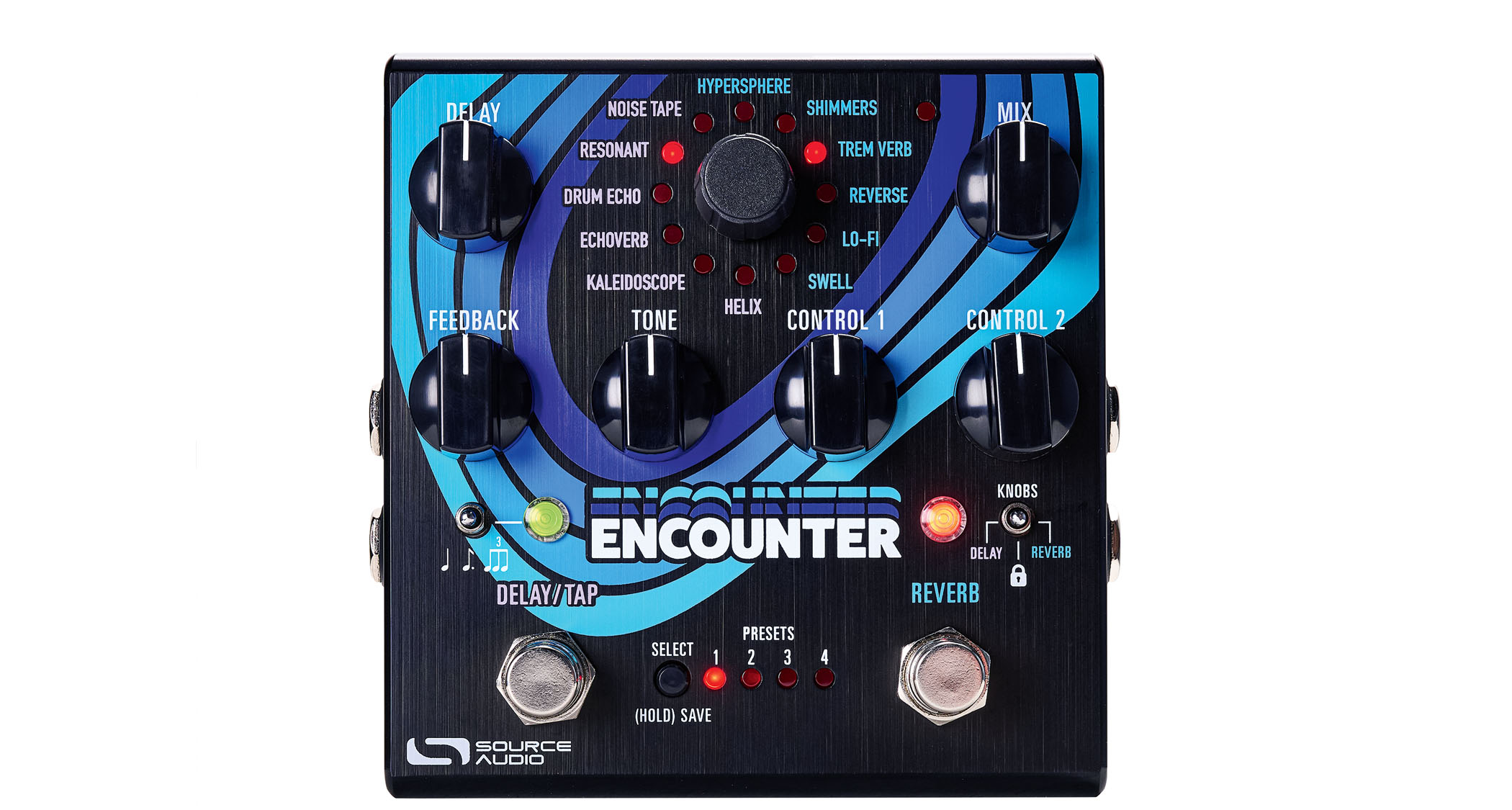
- PRICE: $399/£369/€399
- ORIGIN: China
- TYPE: Delay and reverb pedal
- FEATURES: Selectable buffered or true bypass, expression control, external switching, complete MIDI functionality, editing app
- DELAYS: Helix, Kaleidoscope, Echoverb, Drum Echo, Resonant, Noise Tape
- REVERBS: Hypersphere, Shimmers, Trem Verb, Reverse, Lo-Fi, Swell
- CONTROLS: Delay, Feedback, Tone, Mix, Control 1, Control 2, Engine selector, Knobs switch, Tap division switch, Preset Select switch, Control Input switch, Exp/Switch switch, Delay/Tap footswitch, Reverb footswitch
- CONNECTIONS: Standard input (1 and 2), standard output (1 and 2), MIDI In, MIDI Thru, Expression pedal input, control input, USB
- POWER: 9V DC 400mA adaptor (supplied)
- DIMENSIONS: 117 (w) x 114 (d) x 51mm (h)
- CONTACT: Source Audio
Usability and sounds
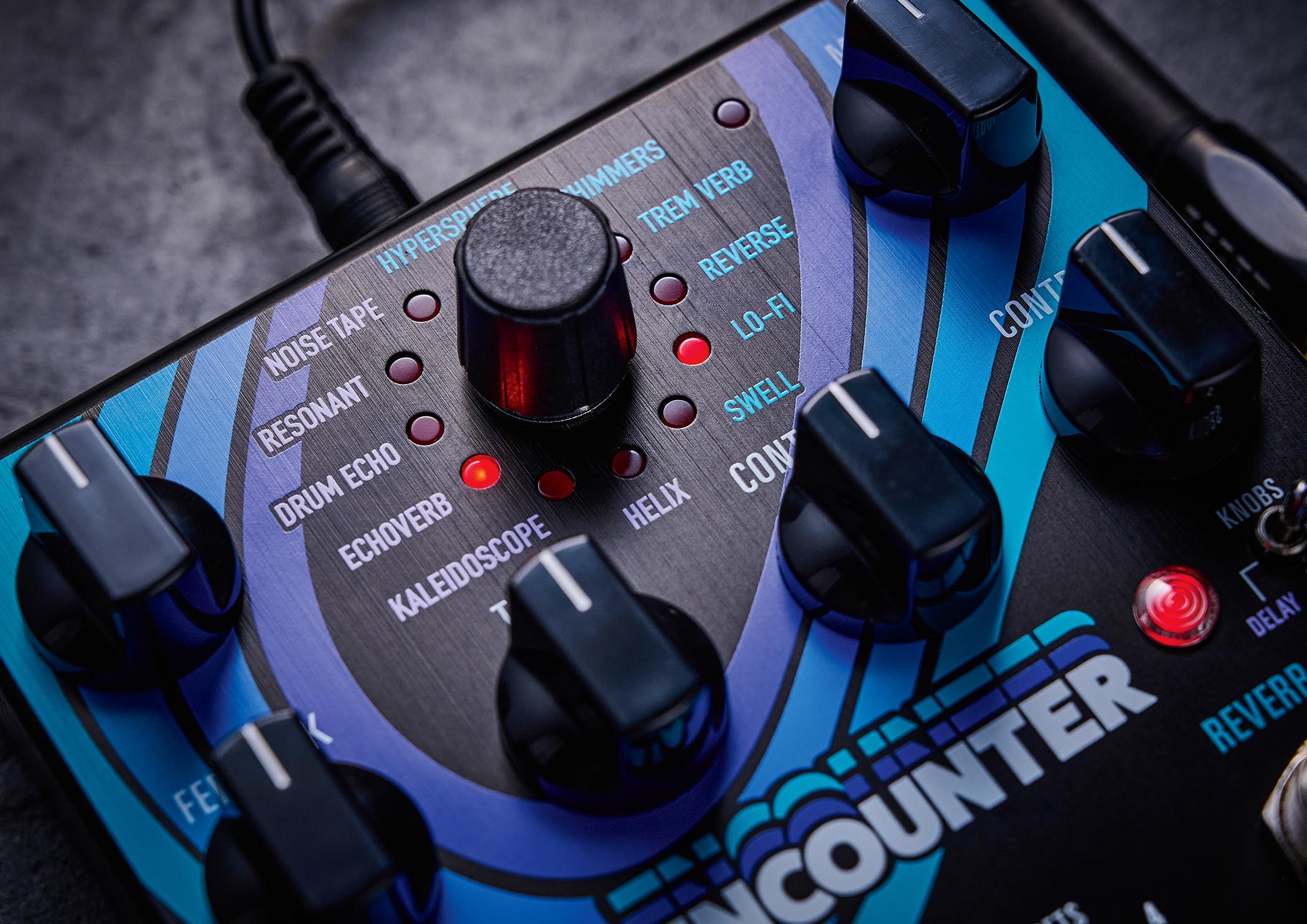
With two inputs and two outputs there are various ways to connect the pedal, with combinations of mono and stereo depending on your needs. The control surface is pretty straightforward yet it still gives you plenty of hands-on adjustment over the sounds.
A small toggle switch assigns the six knobs to either the Delay or the Reverb side, or just locks them so they can’t be accidentally tweaked.
All the latest guitar news, interviews, lessons, reviews, deals and more, direct to your inbox!
While the Mix and Tone knobs are self-explanatory, the Feedback knob offers delay feedback or reverb decay and the Delay knob adjusts delay time and reverb pre-delay.

The Control 1 and 2 knob functions are engine-specific, adjusting salient parameters for each engine – often relating to modulation. Some knobs also have a secondary Alt function accessed by holding down a small button on the rear of the pedal.
While all of that, and your choice of engines, offers plenty for creating sounds to store as presets, the clever way to do things is via Source Audio’s Neuro 3 app on a USB-connected computer or phone.
The app has all the basic parameters clearly laid out for quick and easy adjustment, plus a host of engine-specific Designer parameters beyond those found on the front panel. But it also unlocks other aspects of the pedal’s operation, notably setting the effect order, whether the two run in parallel, split stereo or the more usual cascaded mode where Engine A (Delay) feeds into Engine B (Reverb).
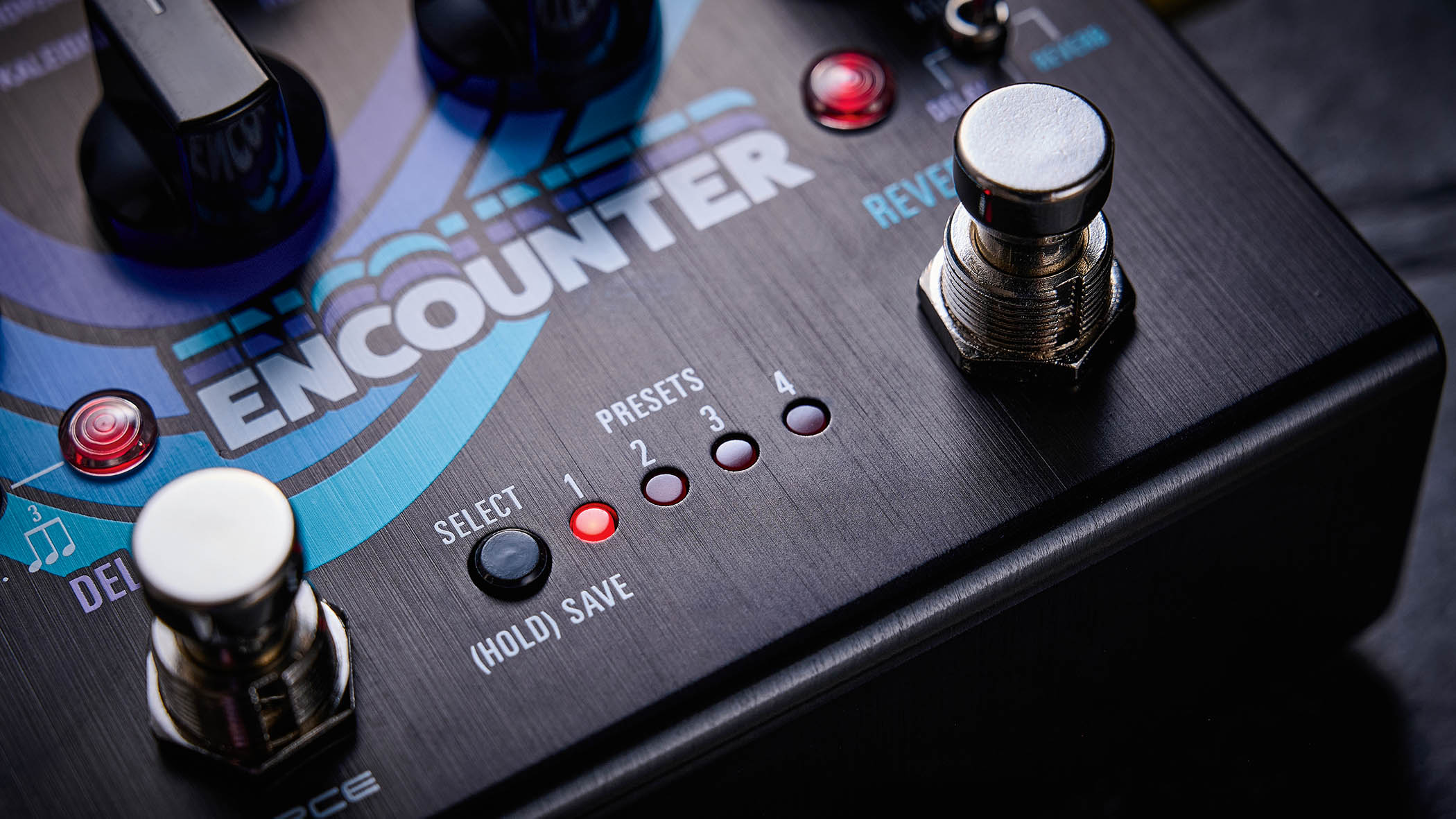
Setting things up is a doddle here, and you can create presets and save them in your library ready to be put into your pedal. There’s also an online community here where you can get presets or share your own.
Looking at the Encounter’s 12 engines, three are brand-new. One is called Hypersphere, a magnificent reverb that definitely makes the pedal worth its asking price. It can cover a massive range of applications, from a basic room sound to huge shifting sheets of ambience.
There’s pitch modulation to be dialled in, but we really liked the embedded phaser with plenty of parameters to be adjusted in the app, including a distortion knob. Shimmers is a new multi-voiced pitch-shifting reverb algorithm, composed of two adjustable pitch voices and an unmodulated reverb voice.
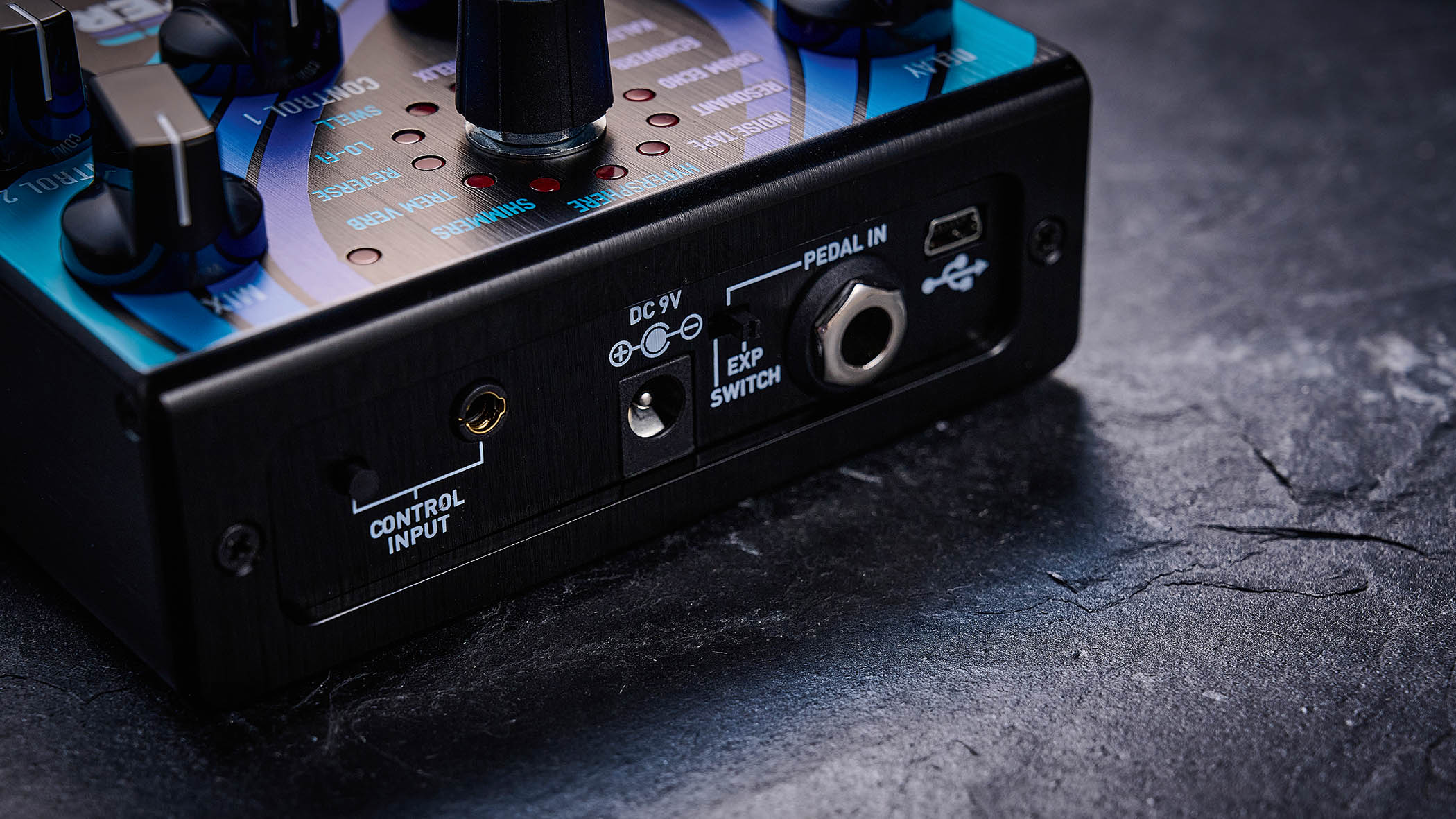
Also new is Trem Verb: an ambient reverb that is cut up by a tremolo effect that’s ultra-adjustable with (among other parameters) various shapes and whether it’s applied to wet signal, dry signal or the mix – all with some great Spaghetti Western and surf potential. Besides those there are Reverse, Lo-Fi and Swell reverbs.
Of the delays, Kaleidoscope is a cascading multi-tap delay with arpeggiating effects that can morph into diffuse reverb, while Helix offers all the oddity you might expect of adding pitch shifting to a glitchy reverse delay. Resonant has a BBD analogue delay base sound but comes with highly adjustable resonant filters.
Drum Echo and Noise Tape have a retro aspect to them, the former expanding on the sonic abilities of a vintage Binson Echorec, the latter with tape echo sounds, complete with total optional adjustment of all associated artefacts. Echoverb is perhaps the most go-to utilitarian of them all, consisting of a clear digital delay with optional plate reverb.
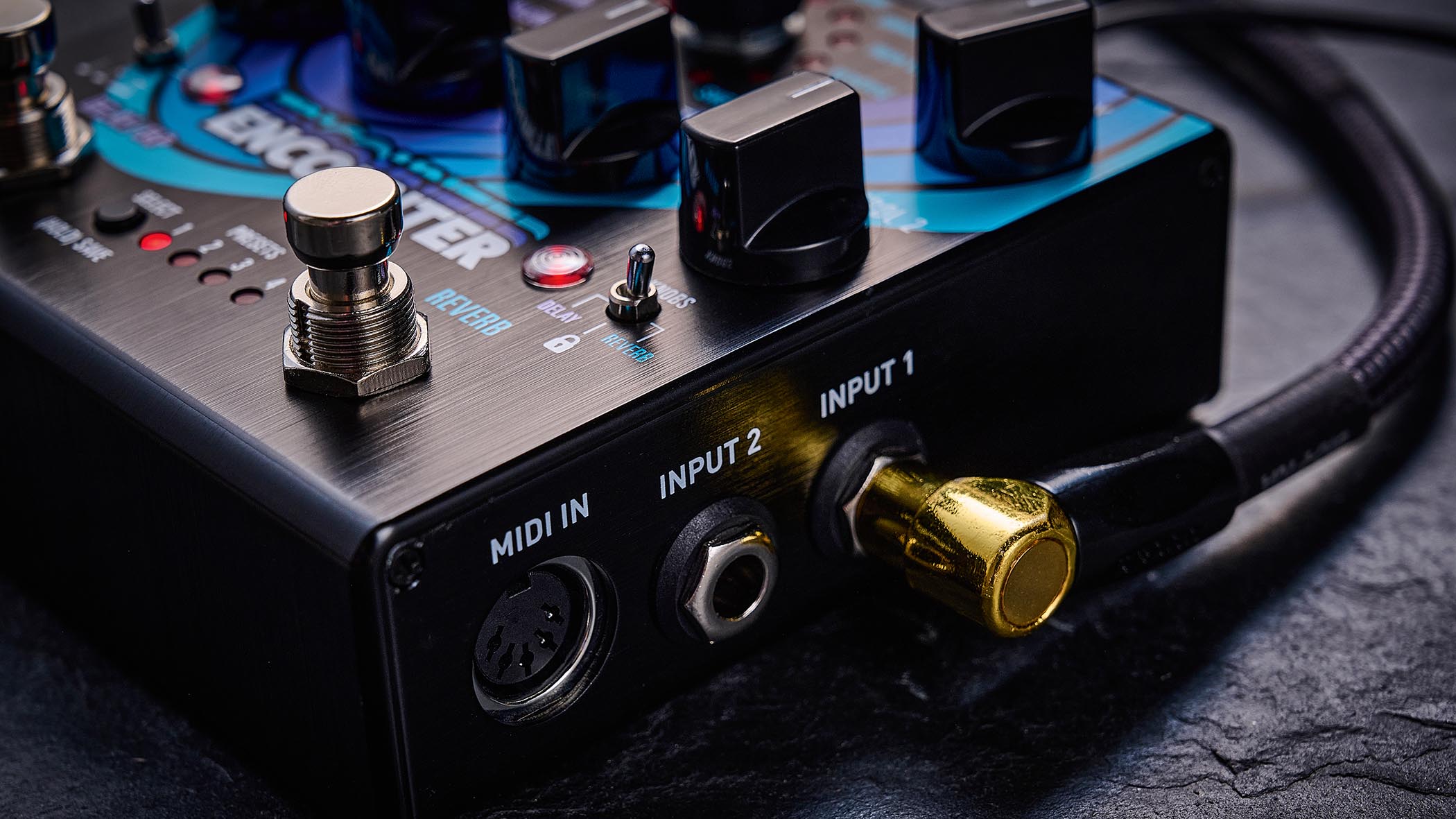
Performance functions are available from both footswitches. The Delay footswitch offers tap tempo in relation to three selectable subdivisions, while the Reverb footswitch can freeze the reverb tail indefinitely with a press-and-hold, allowing you to create a sustaining pad that you can play over.
There’s also a comprehensive MIDI specification. Not only do you have access to 128 presets via Program Change, but many of the Encounter’s parameters (even those that are not assigned to a control knob) are directly accessible via MIDI continuous controller messages. It is also possible to sync delays to MIDI Clock.
An expression pedal can be added for on-the-fly adjustment of up to three parameters simultaneously. Alternatively, you can add an external footswitch for tap tempo or preset cycling.
Verdict
Verdict: ★★★★½

Having separately footswitched delay and reverb in a single compact pedal is a brilliant use of resources – use them separately or exploit the great creative potential of stacking them, particularly feeding delay into reverb.
You can get in and strip some of those engines of their more outré features – turning off modulation, for example – to give you a bunch of ‘meat and potatoes’ delays and reverbs for maybe more conventional guitar usage
The sonic quality and range here is excellent and, although the engines offer the more ‘out-there’ sounds on the surface, there is real flexibility that goes beyond that.
You can get in and strip some of those engines of their more outré features – turning off modulation, for example – to give you a bunch of ‘meat and potatoes’ delays and reverbs for more conventional guitar usage.
Guitar World verdict: While it is undoubtedly a no-brainer purchase for the ambience freaks, shoegazers and experimentalists among us, the Encounter has wide-ranging functionality as a practical delay and reverb unit that may well be the only one any player would need on their ’board.
Hands-on videos
Source Audio
The Pedal Zone
AndyDemos
Trevor Curwen has played guitar for several decades – he's also mimed it on the UK's Top of the Pops. Much of his working life, though, has been spent behind the mixing desk, during which time he has built up a solid collection of the guitars, amps and pedals needed to cover just about any studio session. He writes pedal reviews for Guitarist and has contributed to Total Guitar, MusicRadar and Future Music among others.
You must confirm your public display name before commenting
Please logout and then login again, you will then be prompted to enter your display name.





